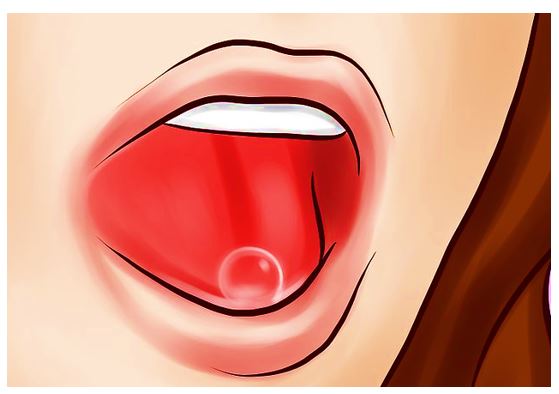In daily life, we will inevitably encounter scenes in which our fingers are scratched. At this time, many people will subconsciously lick a wound for simple disinfection.
Many times we will also see that wild animals or domestic cats and dogs will lick their wounds when they are injured.
Then the question came: Can saliva really help the wound heal? Let us take a look!

Composition of saliva
To understand the role of saliva, we first need to understand the composition of saliva. Saliva is mainly produced in salivary glands, with a pH of 6.6 to 7.1. The normal human secretion is about 1.0 to 1.5 liters per day, of which about 98% is water, and the remaining 2% includes electrolytes such as small amounts of potassium, sodium, chlorine, and calcium. , phosphorus, mucus, antibacterial substances, epidermal growth factor, thrombin and other biologically active ingredients.
Salivation promoting healing
It has been found that wounds or mucous membranes in the mouth are broken and healed much faster than skin wounds. Because of the various growth factors and thrombin contained in saliva, there is a role in hemostasis to promote wound recovery.
In a study published in 2008, Dutch scientists discovered that the presence of small molecules called histamine in saliva also helps treat trauma. It can be seen that the instinct of the animal’s wound has a certain theoretical basis.
However, if it is not a continuous saliva infiltration like the oral environment, the amount of growth factor thrombin supplemented by the sputum alone is very small. Therefore, it is theoretically effective and may be difficult to observe in real life.
Antibacterial effect of saliva
In terms of ingredients, saliva also has an antibacterial effect, an important substance that has to be mentioned: lysozyme.
Lysozyme
In 1922, Alexander Fleming discovered and named lysozyme when studying the antibacterial effect of nasal mucus. Under normal circumstances, the body’s saliva, tears, sputum, nasal secretions, and white blood cells and serum are rich in lysozyme. It is part of the body’s immune system and can destroy the cell walls of bacteria and cause cell breakage to play a bactericidal effect.
Human immune system
However, even if there are antibacterial substances such as lysozyme in the oral cavity, there are still more than 500 kinds of bacteria found in the oral cavity; among them, oral streptococci are the dominant bacteria, accounting for about 60% of the total number of cultured bacteria;
Oral streptococci
A study published in the journal Microbiome estimated that a kiss of more than 10 seconds would cause about 80 million “migration” of oral bacteria. Although the bacteria in the mouth of healthy people are mostly harmless, in the absence of other pathogenic bacteria, such “bacterial exchange” is unlikely to cause disease, but if these bacteria enter the blood through the wound, then there is May cause an infection.
There have been cases reported that in 2002, a man with diabetes in Germany smashed his injured thumb after a bicycle accident. As a result, streptococcal blood in the mouth caused necrotic fasciitis and eventually had to be amputated. Although this is only an example, in patients with diabetes or immunocompromised patients, direct wounds do increase the risk of infection.
Correct treatment of small wounds
So, if you encounter a small wound, what should you do?
At this point, we can first use the pressure hemostasis method, directly press the wound by hand, use clean gauze or other cloth items directly in the bleeding area, can effectively stop bleeding. After compression and hemostasis, the wound can be washed with cold water or water. The wound is disinfected with alcohol swabs, and finally wrapped with hemostatic stickers or gauze, bandages, etc. Small wounds can be cured in a few days.
If the wound is more than 1 cm deep and cannot stop bleeding in a short time, this condition is generally more bleeding, and it needs to be sutured in a regular hospital to effectively stop bleeding and help the wound heal. Before arriving at the hospital, you should also take the method of oppression and hemostasis, press the wound with your hand, or press your finger on the proximal end of the bleeding artery (such as the root of the finger) to block the blood source and reduce bleeding.
In addition, if the injury to the finger is serious, you need to go to the hospital for treatment. Do not apply a heavier drug such as purple syrup to the wound first. This will affect the doctor’s correct judgment of the injury.
However, if the situation around you is really “difficult”, there is neither clean gauze nor clean water to clean the wound, and if the wound has the possibility of being contaminated, as long as your immunity is normal, you can still consider it. Oh, after all, 98% of the saliva is water, at least it can remove the dust and dirt from the wound…
Via Mydrivers
Related Posts
Are PM1 Particles More Dangerous than We Think?
“Brief Answers to the Big Questions,” Stephen Hawking’s Time travel view
Mars may have an underground life and Oxygen
Japanese Space Elevator could take tourists to space by 2050
9 Hypothesis, Why Aliens haven’t found yet by humans?
NASA’s James Webb telescope successor of the Hubble telescope